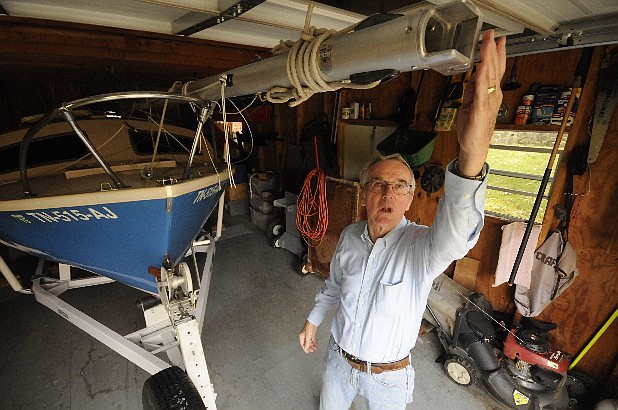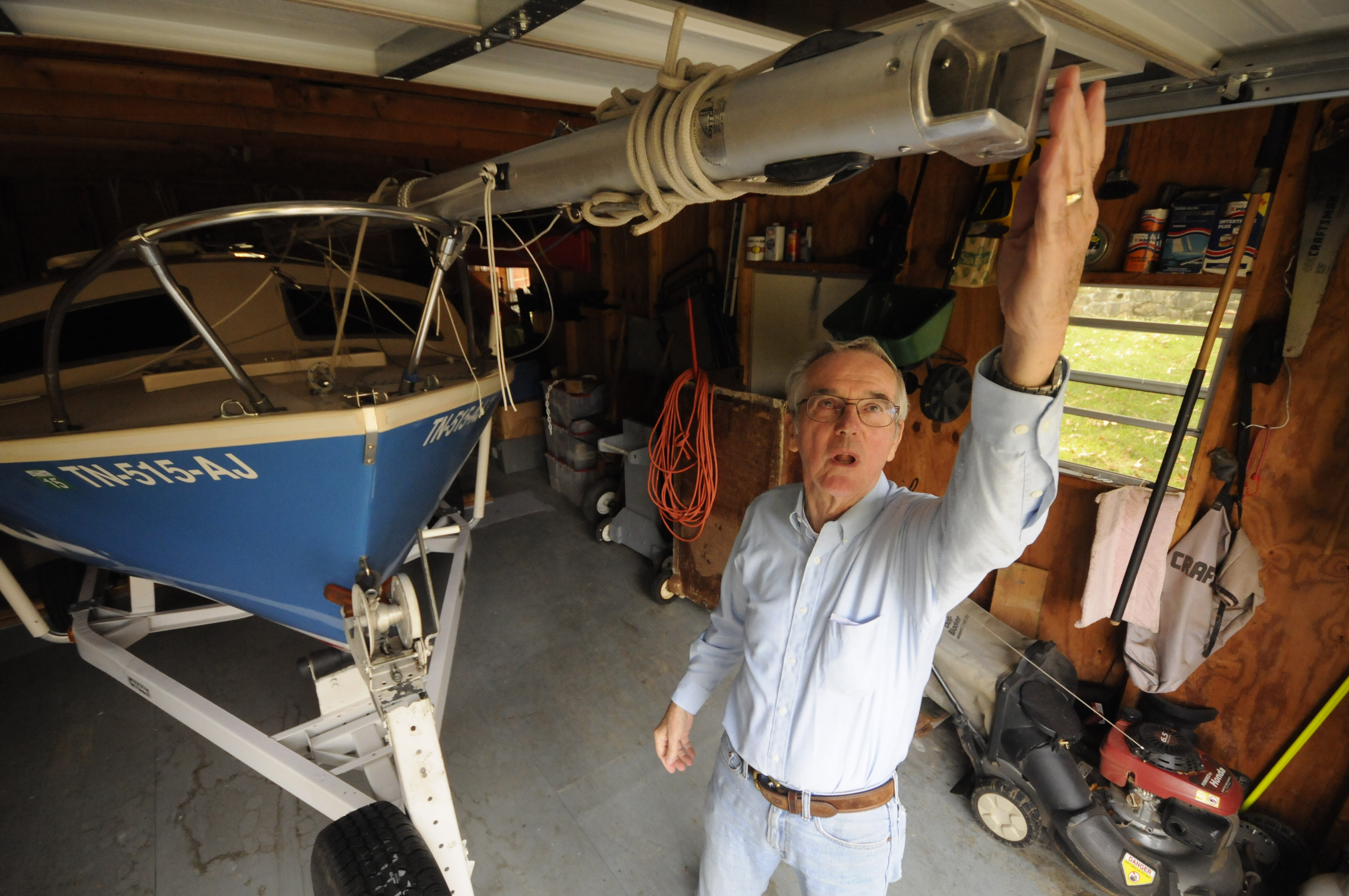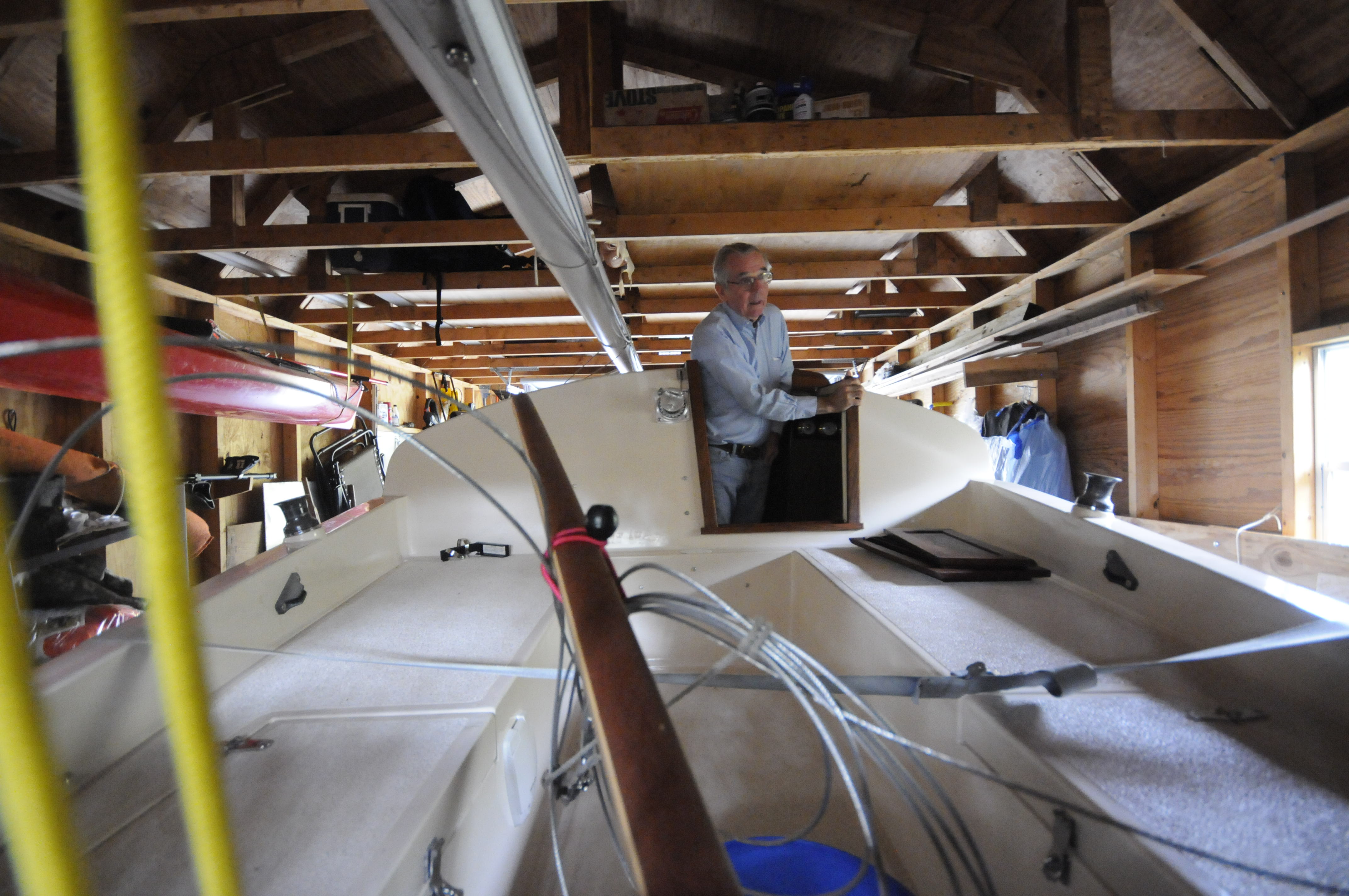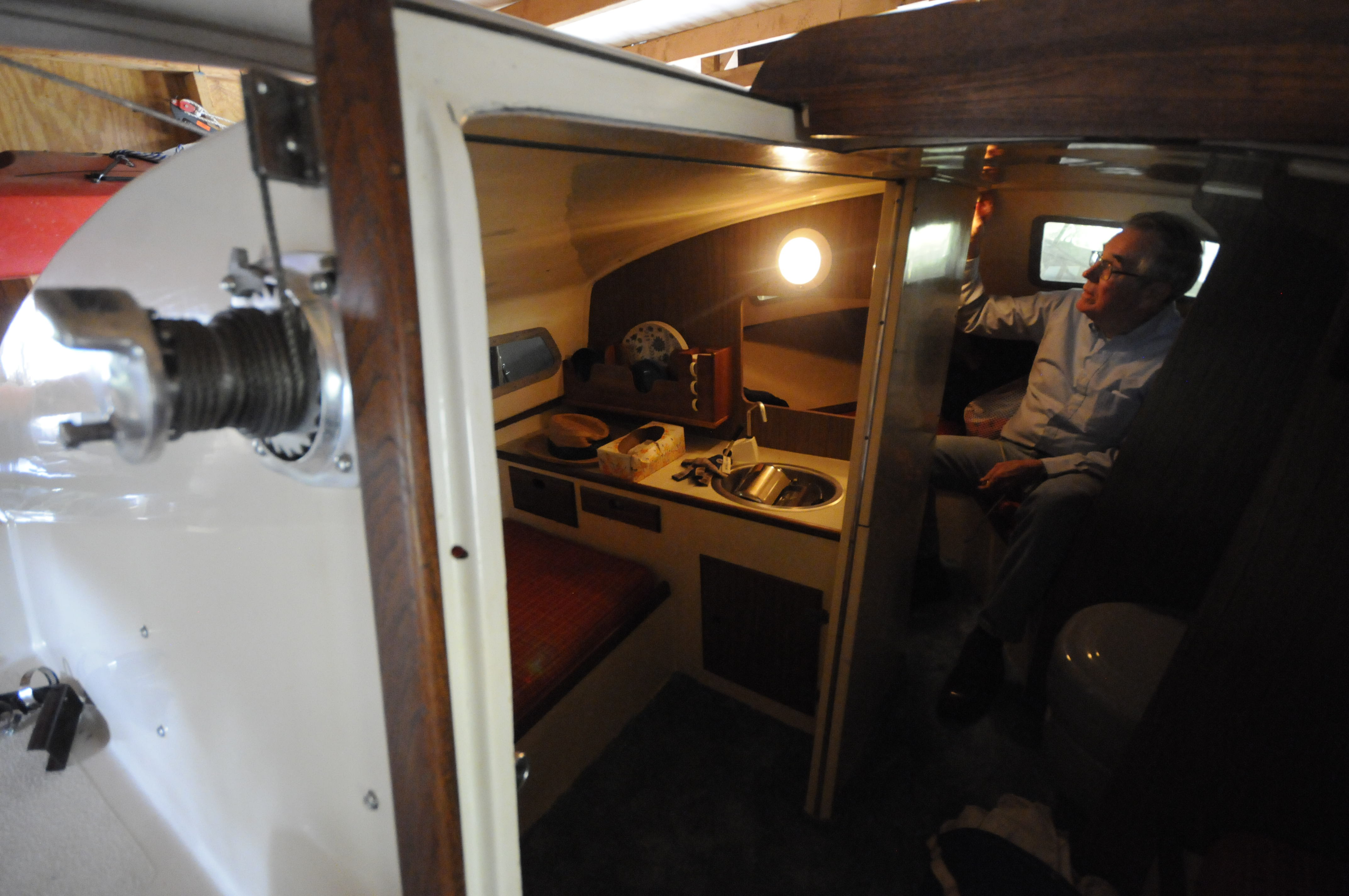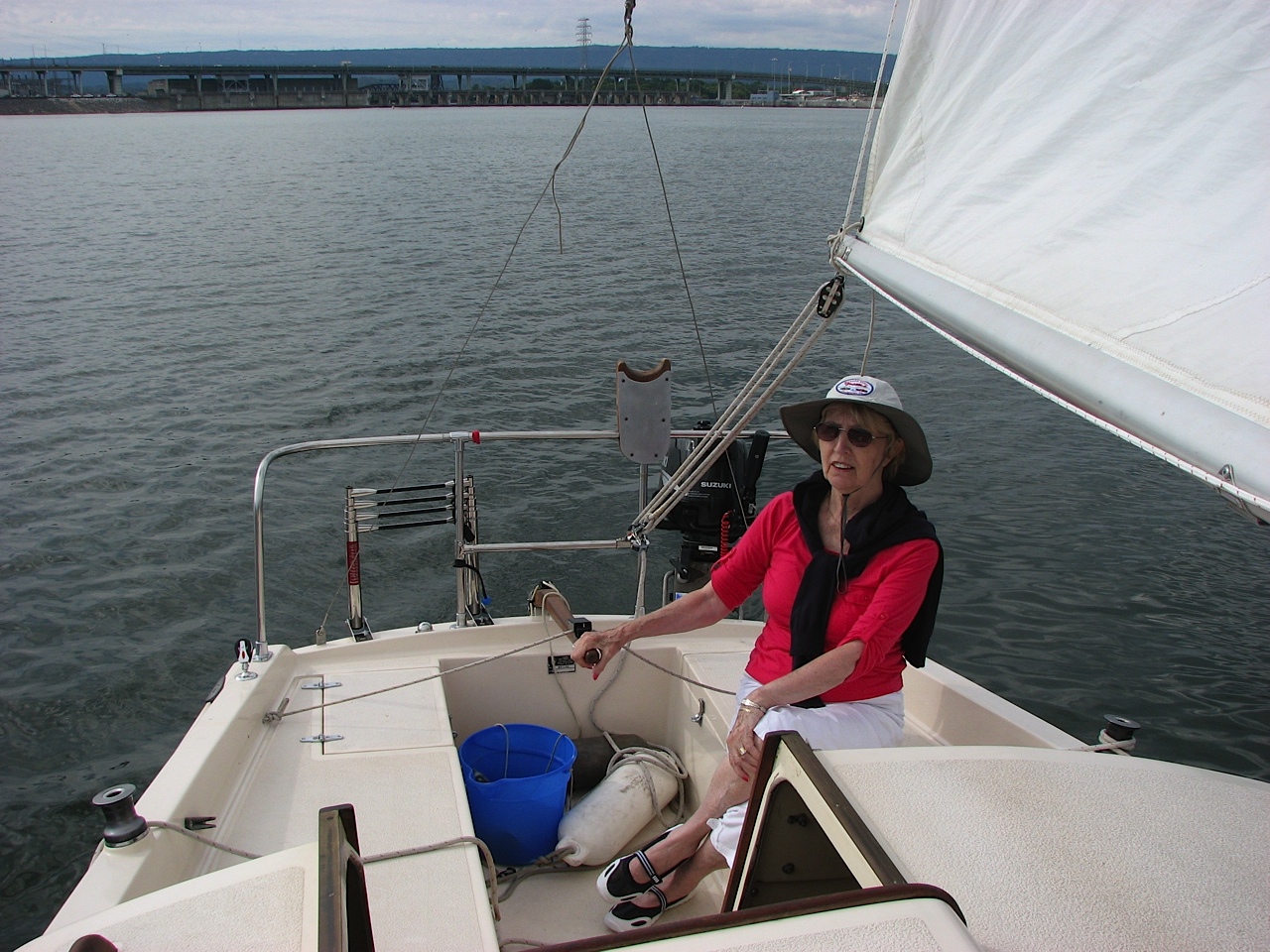With winter's cold coming, Brooks Northern will likely not take his Matilda 20 sailboat onto the water for a few months. But he can get a bit of his boating fix by reading about his craft in a national magazine.
The four-page article about his boat, "Wing Ding II," appears in the November/December issue of "Good Old Boat," which is dedicated to sailing enthusiasts. Northern's first boat, a small Sunriser he carried around on top of his car, was the first "Wing Ding," a whimsical name that even Northern himself is not sure of its origin.
"It just sounded like a party," he says. "I'm not even sure where it came from."
Matilda sailboats are popular in Canada, England and Australia, but somewhat rare in the United States. When Northern contacted the editors at the Minnesota-based magazine about featuring them in an article, they sent a reporter to Chattanooga to interview him.
"There aren't many boats like this in this country," Northern says at his Hixson home.
Northern, 79, and writer Bob Hoffman spent a day sailing on Lake Chickamauga last summer and, several days later, Northern hauled his boat to Paris, Tenn., to sail on Kentucky Lake near Hoffman's home.
A thin, athletic man, Northern lights up when talking about "Wing Ding II," especially when describing how he has to rest the mast on his shoulder and walk it into place to raise it.
"I built a crutch because I had to figure out ways to raise it myself," he says.
Along with the Matilda 20, the sailboats also come in 16 and 23 models, but those are very rare; Matilda 20s are the more popular version around the world. The numbers refer to general lengths of the crafts.
While serving in the Air Force and stationed overseas in the early '70s, Northern saw one of the boats at the London Boat Show and decided he had to have one.
"I just like the old-timey look of them," Northern says. "They have a classic look."
The expense of shipping one over from England to the U.S. put his dream on hold, however, and it wasn't until the career military man was reassigned to Oklahoma that he discovered that Matildas were also made in Canada. He bought his in 1975 from the Ouyang Boat Works, which produced them until 1986 when it went out of business.
The "Wing Ding II" is 19 feet 6 inches from tip to tip with a 19-foot mast. The boat itself is made of molded fiberglass and trimmed in teak. In fact, the hull, galley, bunk area and deck are all made from four individual pieces of molded fiberglass. It can sleep four, though Northern says he has only overnighted in the boat about four times.
The fact that his Matilda could pass for nearly new is a testament to its design and construction.
One of the unusual characteristics of the boat is that it only has a 9-inch draft with the retraction of the keel (the large fin that sticks out perpendicular to the hull beneath the water), allowing Northern to get right up near the shoreline for loading and unloading passengers and for retrieval of the Matilda at the boat ramp. It also makes the 1,500-pound boat (2,500 pounds with trailer and all) easy to haul.
In boating parlance, the Matilda has a "conventional Marconi sloop rig with upper shrouds (a wire or line stay from the deck or hull supporting the mast on each side), single lower shrouds, a single set of spreaders (metal struts on the mast that hold the shrouds out from the mast for a better support angle), a split non-adjustable backstay (the rigging that runs from the mast to the transom or rear quarter), and a sturdy aluminum mast and boom," according to Hoffman's article.
The molded design and shape of the boat make it more comfortable when sailing, but it also is less likely to tilt or roll with people stepping on and off or moving about while under sail.
"It's a very stable boat," Northern says.
That's an important factor for Northern's wife, Mary Alice, who suffers from neuropathy, a nerve disorder that causes numbness and tingling in the hands and feet.
"It's convenient for me to get on," she says, "and I have a place to sit in the sun or I have a place to take a nap if I want to. I don't get into the mechanics of it because I have neuropathy, but it is easy for me to get into and out of."
Northern has tried to keep the boat as close to original as possible, although he has made a few modifications to the rigging and to the mast, particularly how it meets the deck, which allows him to raise it by himself. At the suggestion of Hoffman, he also recently replaced the originally flat, aluminum rudder with a streamlined version that better displaces the water.
He had to have the hull repainted once after storing it under some trees, an issue he rectified by building a barn specifically for housing the craft.
"I just clean it and oil the wood, now," he says.
Contact Barry Courter at bcourter@timesfreepress.com or 423-757-6354.
